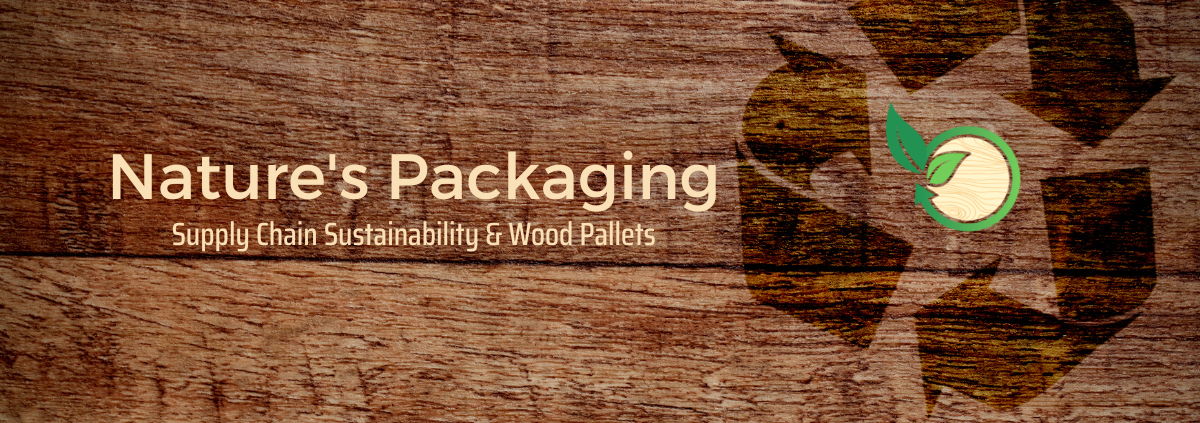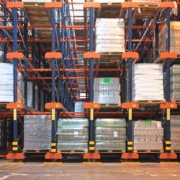Achieving Supply Chain Sustainability with Wood Pallets
Supply chain sustainability becomes more important with the passing of new climate change legislation. Companies from every sector are identifying challenges and presenting solutions to make their supply chains more environmentally friendly.
For every industry, taking action to mitigate climate change is fast becoming a primary concern. As one of the fundamental cogs in the economic wheel of trade and commerce, supply chain management can lead the way with long-term sustainable solutions.
A More Sustainable Supply Chain
For consumer businesses, the supply chain accounts for 80-90% of environmental impacts. This includes greenhouse gas emissions and air, land, water, and other ecological impacts.
Addressing those impacts to comply with climate action regulations and consumer demand is one of the great challenges facing business today. It won’t be easy, but creating a more sustainable supply chain is possible.
Nearly every major industry already has access to a crucial part of a sustainable supply chain: the wood pallet.
One of the supply chain’s most essential components, the wood pallet is also its most sustainable. Of the 1.8 billion pallets in use in the United States, 90% are made of wood.
The life cycle of wood pallets represents a gold standard in terms of sustainability. As the holder of an Environmental Product Declaration UL Certification, wood pallets exemplify the philosophy of reduce, reuse, recycle.
Strong, long-lasting, reusable, and recyclable, wood pallets may even produce a net positive carbon footprint. They store carbon dioxide throughout their life cycle and save it from release into the atmosphere.
Today, the wood pallet represents a sustainable choice. The challenge is to realize the same level of sustainability across entire supply chains and, in effect, operate at a net zero waste capacity. Recyclable pallets manufactured from renewable resources is a key choice.
Consumers are demanding that companies make decisions based on positive environmental impact. Everyone from suppliers to end users is making sustainability a priority.
A company needs a comprehensive plan for sustainability at every level. Now is the time to examine and improve processes, but where to start? That’s where good partners can be the necessary guide with insight and metrics.
The Challenges Ahead
Sustainability challenges begin with system complexity. Companies have historically ignored supply chain areas outside their direct control. This leads to gaps in information and bottlenecks that go unnoticed until they bubble up and require action.
Sustainability is measured by the environmental and human impact of every single step of the lifecycle of a product. A company that creates eco-friendly headquarters also needs to attend to working conditions, pollution, and transportation practices abroad.
Problems vary depending on the industry. One company may identify air and water pollution from suppliers’ operations. Another may find inadequate safety measures where raw materials are procured.
Companies need comprehensive information about each step in the lifecycle of their products. That includes energy providers as well as suppliers and sub-contractors.
Once detailed information is collected, planning can begin for remediation of negative impacts. Over 80% of businesses do not have the information they need improve the sustainability of their supply chains.
Consumer businesses balance affordability with reliability and sustainability at every level of operation. Instituting sustainable practices may seem costly, but they strengthen the supply chain and save money in the long-term.
Decreasing pollution, shoring up facilities against extreme weather, and making positive contributions to healthy communities all make the supply chain more durable and more efficient. Time and materials are saved by eliminating wasteful and harmful practices.
Managing Supplier Sustainability
The most challenging aspect of creating a more sustainable supply chain is working with suppliers and their subcontractors. 75% of companies do not work with suppliers to reduce carbon emissions.
Businesses are like all customers—they have influence. A company can search for suppliers that already have sustainability goals and practices in place. They can also mandate that their suppliers bring facilities into compliance with a set of practices they determine will increase sustainability.
An even better solution is to work directly with suppliers. Using clear and verified guidelines for sustainable practices, companies can help suppliers improve operations.
The company goes from demanding customer to trusted partner. The environmental and human impact of the improved relationship strengthens to a more sustainable supply chain.
How a company works with suppliers depends on what objectives are identified. Making sure that everyone is using wood pallets is an easy first step in helping suppliers become more sustainable.
Best Practices in Sustainability
The complexity of supply chain sustainability can make it seem unmanageable. Organizations like CDP, World Wildlife Fund, The Sustainability Consortium, and others offer guidance. They help companies find issues and set goals for decreasing environmental and societal impact.
Looking to wood pallets as a framework, we can see some best practices at work.
Supply chains should use, wherever possible, renewable resources. Invest in solar, wind, and other clean energy use to build infrastructure and decrease pollution. Buy recycled wood pallets from suppliers wherever possible.
Make landfill avoidance a priority. Reduce waste, reuse materials, and recycle what is no longer useful. Wood pallets can be reused up to 15 times, and can be recycled into furniture, structures, biofuel, animal bedding, or mulch.
Studies show that 95% of wood pallets are recycled into usable materials. Even the small amount that ends up in the landfill can be used as the biodegradable top cover.
Incremental Improvements in Sustainability
The global supply chain is still far from its sustainability goals. Even the wood pallet industry can do more.
Ensuring that your wood pallets are used as many times as possible should be goal number one. Widely available recycling initiatives reduce the number of pallets that go to the landfill. Encouraging or helping suppliers switch to wood pallets improves lower-tier sustainability.
Every step gets us a little closer to a circular supply chain. Waste reduction, energy conservation, and greater emphasis on processes that benefit both society and the environment all reduce long-term costs.
Wood pallets are an important part of a sustainable supply chain. Unlike plastic pallets, they are recyclable, sustainably produced, and biodegradable.
There are places in your supply chain where sustainability requires concerted efforts with far-flung partners. Implementing the use of wood pallets across your company and its suppliers is an uncomplicated, powerful way to make a difference.












